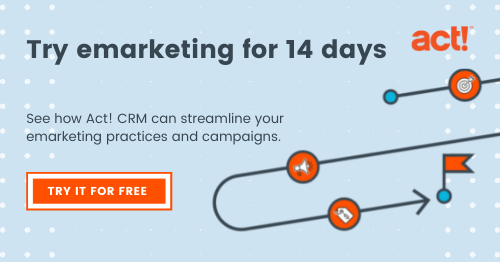
Do you have an old marketing list? Maybe you haven’t been sending email marketing for a while, or maybe you’ve found an old list tucked away somewhere. An old marketing list can be tempting, as the leads are already in your possession and there’s a potential that some of those will convert, so why not put those contacts into a campaign and see what happens? That sounds simple enough, but if you’re thinking of dusting off that old list, there are downsides to weigh out before you proceed.
Old lists are inherently risky to your sender reputation as the addresses are more likely to hard bounce, generate spam complaints, or at worst, have been converted into spam traps. Old lists also carry much less potential for conversion than a list composed of recently acquired and interested subscribers. The risk-reward balance for old lists is not in your favor, meaning that in many cases, any conversions gained will be outweighed by conversions lost due to poor email deliverability to your active and interested leads. Despite this, the temptation often persists.
You might be thinking that in your particular case, a net negative outcome isn’t likely. So how should you proceed?
Risky business
To start, you’ll need to evaluate the state of the list. How risky is it? How likely is it that the addresses will still be valid, and that you still have sufficient relationships with the recipients to send them marketing? The risk of reputation damage is increased if any of the following conditions apply to your list, and compounded if more than one condition applies:
- The last time you sent to the list was more than six months ago
- When you were sending to the list, you weren’t performing regular list hygiene
- You don’t have a record of suppressions (recipients that opted-out, hard bounced, or complained)
- The recipients didn’t provide explicit permission for marketing in the first place
If any of the above conditions apply and protecting your sender reputation is a priority (hint: it should be!), the safest option is to not send to the list at all. In some cases, it’s the only acceptable option, as not having a record of suppressions or lacking explicit permission are both non-starters. Sending to contacts that have previously opted-out can put you at risk of legal consequences from anti-spam legislation like CAN-SPAM, CASL, GDPR, etc., and sending without permission is a violation of the compliance policies of any reputable email service provider. While this can be a hard choice to make, it’s important to recognize when your email marketing list is no longer “yours” and has become just a list of addresses. Don’t be afraid to start over by building a clean, healthy list from the ground up, as it will be more beneficial in the long run. Also remember that if it’s practical, you can reestablish email marketing permission through any other communication channel, like providing the option to subscribe on any transactional email you send, or any other business interaction you have with your contacts.
In other cases though, your list may present an acceptable amount of risk. Maybe everything is tip-top, but you haven’t sent to the list in seven months. That’s a long time in the world of email, and some of your subscribers will surely have forgotten they opted-in. But if you have other reasons to believe your relationship with the recipients is still intact, such as regular communication through other channels, or even transactional email communication, you can take steps to minimize any remaining risk.
Proceed with caution
Salvaging marketable contacts from an old list should be done with caution, as you won’t always know if you’re sending to spam traps, or if your email stops landing in the inbox, at least not until it’s too late. Follow these steps to find the safest path forward:
- Verify permission – Just because an address is in your database doesn’t mean you obtained explicit permission for marketing when you acquired it. Remove any contacts where permission can’t be verified.
- Validate email addresses – Consider using an email address validation/verification service to identify and remove known bad addresses. Under normal circumstances, the simple combination of obtaining explicit permission and removing unengaged contacts is the preferred option to eliminate bad addresses because it relies on positive indicators to validate addresses and removes spam traps with certainty. Address validation services can’t account for permission and use the lack of negative indicators to validate addresses, which is flawed because spam traps are kept secret by design. But if you have permission yet lack any recent engagement data to clean your list with, address validation serves as a useful alternative, albeit a less effective one.
- Partition your list – If you’re intent on taking the risk of sending to the list at this point, you don’t have to take on all of the risk at once. Break your list into smaller parts so you can test the last step while still limiting the potential reputation damage.
- Email confirmation – Send an email confirmation request to one partition from your list. Ask recipients to click a link to confirm that they still want to receive marketing, and only continue marketing to those that click to confirm. In your request email, take the opportunity to reset your recipient’s expectations around what they’ll receive and how often. If all goes well, repeat this step with each partition, checking each time for excessive hard bounces, spam complaints, or any other signs of reputation damage. If at any point you find you are doing more harm than good, just remember that it’s not too late to abandon this process and stop sending to the remaining partitions – the whole point of dividing your list into parts was to provide you this opportunity.
Next steps
Once this process is complete, you’ll have a clean, healthy list that has confirmed permission, doesn’t contain any invalid addresses, and doesn’t contain any spam traps. Going forward, practice regular list hygiene maintenance, only add new addresses that have provided explicit permission, and maintain regular contact with your recipients. Do your future self a favor by ensuring your list stays clean and healthy so you won’t have to salvage an old list ever again.






